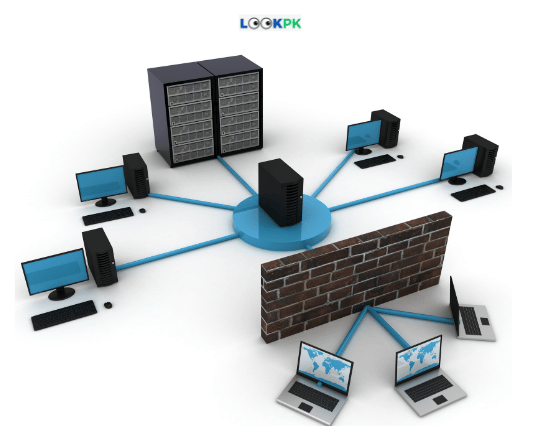A gateway is a fundamental component that serves as a bridge between different networks or network protocols. It acts as an entry and exit point, allowing data to flow smoothly between disparate networks while translating and routing information as required. This article will delve into the definition, features, and uses of a gateway, shedding light on its vital role in modern-day communication.
Definition of a Gateway
A gateway is a networking device or software component that facilitates communication and data exchange between two or more networks that use different communication protocols. It essentially acts as an intermediary that enables seamless transmission of data packets, ensuring compatibility and connectivity between otherwise incompatible networks. A network gateway is a device or node that connects disparate networks by translating communications from one protocol to another.

Features of a Gateway
- Protocol Translation: One of the primary functions of a gateway is protocol translation. It can convert data between different network protocols, ensuring that devices using various communication standards can communicate effectively. For instance, a gateway can translate data from Transmission Control Protocol/Internet Protocol (TCP/IP) to Asynchronous Transfer Mode (ATM) protocol.
- Network Address Translation (NAT): Gateways can implement Network Address Translation, which allows multiple devices on a local network to share a single public IP address when accessing the internet. NAT hides the internal IP addresses of devices from external networks, enhancing security and conserving public IP addresses.
- Security and Firewall: Many gateways come equipped with firewall capabilities that protect networks from unauthorized access and potential security threats. They can inspect incoming and outgoing data packets, block malicious traffic, and enforce security policies.
- Routing: Gateways handle the process of routing data packets between networks. They analyze the destination address of incoming data and determine the best path for its delivery, ensuring efficient data transmission.
- Virtual Private Network (VPN) Support: Some gateways offer VPN functionality, allowing secure communication between remote networks or devices over a public network like the Internet. VPNs provide encrypted tunnels for data transmission, ensuring data privacy and security.
Uses of a Gateway
- Internet Gateway: In-home and office networks, the internet gateway is the device that connects the local network to the internet. It handles the translation between private IP addresses within the local network and the public IP address provided by the internet service provider.
- Protocol Conversion: Gateways are used to facilitate communication between networks that use different communication protocols. For example, they can enable communication between Ethernet and Wi-Fi networks.
- Legacy System Integration: Gateways are often employed to integrate older or legacy systems with modern networks. They can translate data from legacy protocols to newer ones, ensuring seamless integration without requiring a complete overhaul of existing infrastructure.
- Connecting LANs and WANs: Gateways are essential in connecting Local Area Networks (LANs) to Wide Area Networks (WANs). They serve as the connection point between an organization’s internal network and the larger external network, such as the Internet.
- IoT Communication: In the context of the Internet of Things (IoT), gateways play a crucial role in aggregating and relaying data from various IoT devices to the cloud or centralized servers. They provide the necessary translation and routing for IoT devices with diverse communication protocols.
How is a Gateway different from a Router?
A gateway connects networks, while a router typically delivers data within a network. Historically, gateways and routers have been separate devices. However, it’s becoming more common for their functions to be combined and simply called a router. For example, the Wi-Fi routers commonly provided for home and small business internet service are both a router (delivering data) and a gateway (translating it so destination devices can use it). Due to this logic, a router may be considered a gateway, but a gateway is not always considered a router. Routers are the most common gateway, used to connect a home or enterprise network to the internet.
Conclusion
A gateway is a versatile networking device or software component that acts as an intermediary, connecting and facilitating communication between different networks or protocols. Its ability to translate data, handle routing, and provide security features make it a vital tool in the seamless integration and operation of complex networks. Whether connecting LANs to the internet, enabling communication between legacy and modern systems, or supporting IoT deployments, gateways are indispensable in ensuring efficient and secure data exchange across networks in today’s interconnected world.

